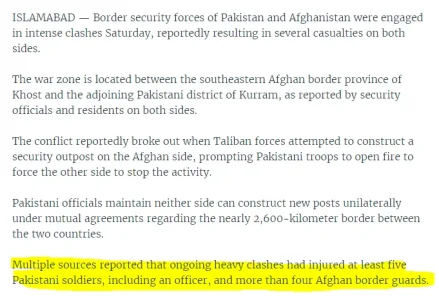The Decline of Pakistan and Its Descent into a Debt Abyss
Pakistan, a land blessed with perennial rivers, fertile soil yielding abundant crops, and a hardworking population—how could such a country face bankruptcy and depend on international aid?
The answer is not difficult to discern. For over forty years, and even prior to that, Pakistan’s lifestyle has been propped up by external funding related to wars in Afghanistan. From 1979 to 1989, during the Soviet invasion, the United States funneled around $10 billion into Pakistan (equivalent to $24 billion today) to support the war effort. None of this money was directed toward economic development; instead, it fueled the growth of a massive military. Earlier, during the Cold War in the 1950s, nearly $6 billion (now worth $14 billion) was provided as military and economic aid.
When the Soviets withdrew from Afghanistan, a new anti-American insurgency took root, with its headquarters in Afghanistan. This eventually led to the 9/11 attacks, after which the U.S. invaded Afghanistan to hunt down those responsible and dismantle the government that harbored them. Once again, Pakistan benefitted financially from the conflict, receiving $22 billion over 15 years, to keep the country on America's side.
For seven decades, U.S. financial assistance—given for various strategic reasons—kept Pakistan afloat. Every time Pakistan faced a financial crisis, a donor was always nearby to help.
It was President Donald Trump, in 2016, who put an end to U.S. aid to Pakistan, citing the country's duplicitous behavior. In the following eight years, without this steady inflow of money, Pakistan found itself holding out a begging bowl. China's aid followed, motivated by political and strategic interests, but the loans came with high interest rates. Despite this, Pakistan’s financial woes persisted. The International Monetary Fund (IMF) stepped in last year with a conditional $7 billion low-interest loan, which also proved insufficient. Pakistan continues to seek more aid. The IMF's loan came with conditions for internal economic reforms, which have led to 30% inflation, food shortages, and further economic turmoil.
One area that remains untouched is the country's excessive military expenditure. Pakistan maintains a 600,000-strong military, largely to assert territorial claims against India. However, the money spent over the past 40 years has yielded no tangible results. Pakistan has lost all of its wars, and it is unlikely to achieve its objectives in the near or distant future.
Gone are the days of Muhammad Shoaib, who served as Finance Minister from 1958 to 1965 and kept Pakistan’s military and other spending in check. Under his stewardship, the country enjoyed a 6% annual growth rate. Since then, growth plummeted to 3%, and today it is negative, accompanied by widespread internal unrest.
There are no solutions when religion is intertwined with military and strategic thinking. Such an approach, without any real achievements, leads only to political and economic ruin. Pakistan is left with little more than empty slogans and threats, while the results remain dismal.
Despite the suffering of its people, Pakistan has yet to learn its lessons. It continues to pour an abnormal amount of money into defense and nuclear weapons, while neglecting economic development.
Unless this pattern is reversed, there is little hope for Pakistan’s economic survival.






 www.voanews.com
www.voanews.com




 www.voanews.com
www.voanews.com










